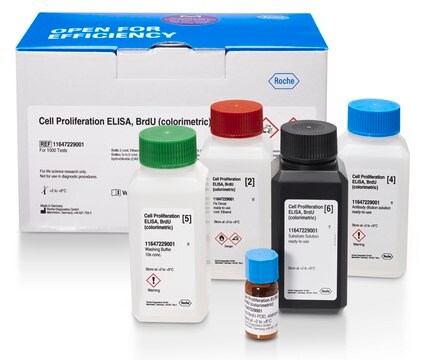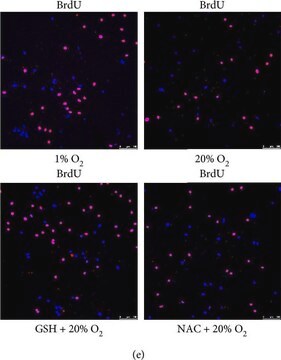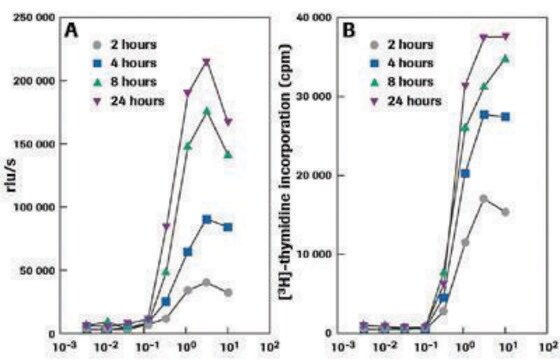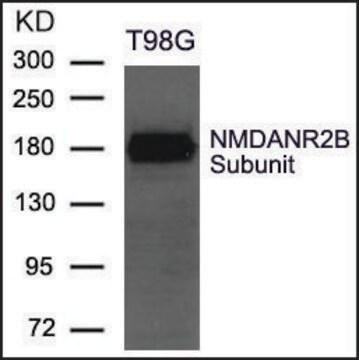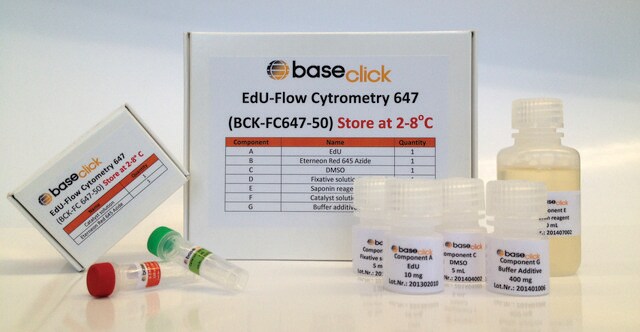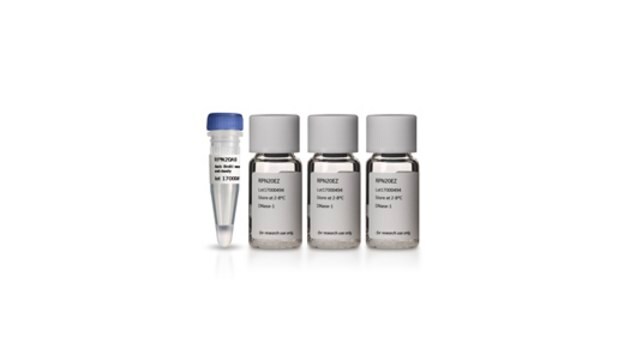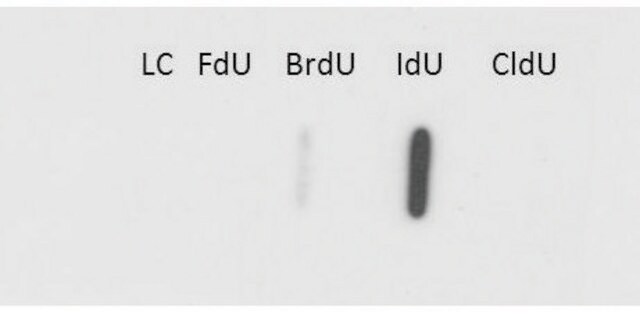11170376001
Roche
Anti-Bromodeoxyuridine
from mouse IgG1 (clone: BMC9318)
Sinonimo/i:
anti-BrdU, antibody
About This Item
Prodotti consigliati
Origine biologica
mouse
Livello qualitativo
Coniugato
unconjugated
Forma dell’anticorpo
purified immunoglobulin
Tipo di anticorpo
primary antibodies
Clone
BMC9318, monoclonal
Saggio
90% (HPLC and SDS-PAGE)
Forma fisica
solution
Confezionamento
pkg of 50 μg (500 μl)
Produttore/marchio commerciale
Roche
Isotipo
IgG1
Temperatura di conservazione
−20°C
Descrizione generale
Specificità
Immunogeno
Applicazioni
- Flow cytometry
- Immunohistocytochemistry
- Cryosections
- Paraffin sections
Qualità
Specifiche
No. of tests: 250 (Flow cytometry)
Stato fisico
Nota sulla preparazione
Working concentration of conjugate depends on application and substrate. Dilutions should be made in PBS (pH 7.4) containing 0.1% BSA to maintain stability of the antibody.
Risultati analitici
No cross reaction to any endogenous thymidine or uridine.
Cross reactivity with 5-Br-UTP has not been tested but it is suggested that there is a good chance for reaction, because the only difference is an absent hydroxyl group on the ribose distal to the bromine substitution.
Altre note
Non trovi il prodotto giusto?
Prova il nostro Motore di ricerca dei prodotti.
Codice della classe di stoccaggio
12 - Non Combustible Liquids
Classe di pericolosità dell'acqua (WGK)
nwg
Punto d’infiammabilità (°F)
No data available
Punto d’infiammabilità (°C)
No data available
Certificati d'analisi (COA)
Cerca il Certificati d'analisi (COA) digitando il numero di lotto/batch corrispondente. I numeri di lotto o di batch sono stampati sull'etichetta dei prodotti dopo la parola ‘Lotto’ o ‘Batch’.
Possiedi già questo prodotto?
I documenti relativi ai prodotti acquistati recentemente sono disponibili nell’Archivio dei documenti.
I clienti hanno visto anche
Il team dei nostri ricercatori vanta grande esperienza in tutte le aree della ricerca quali Life Science, scienza dei materiali, sintesi chimica, cromatografia, discipline analitiche, ecc..
Contatta l'Assistenza Tecnica.